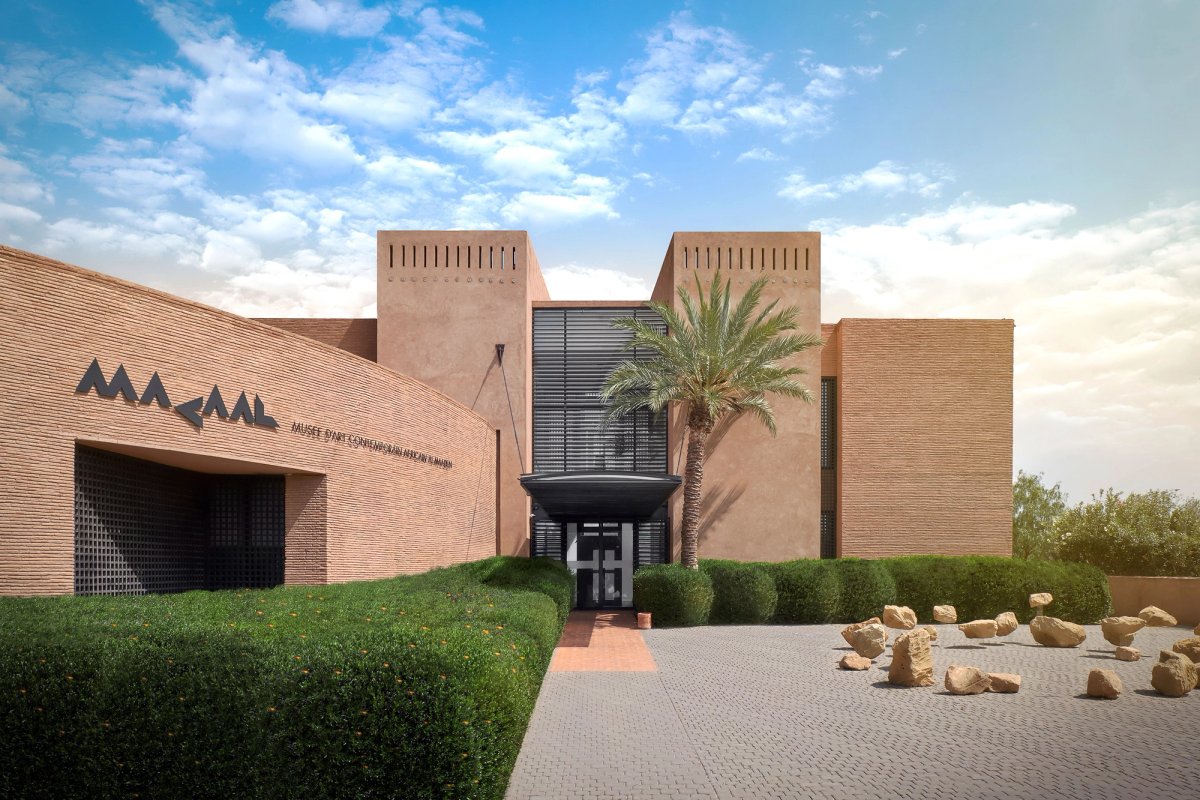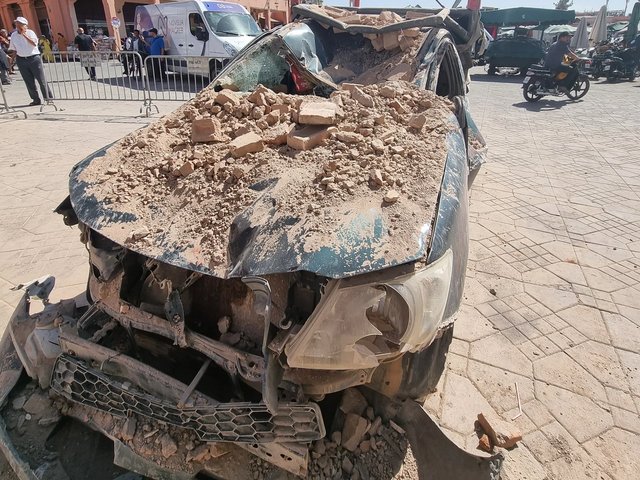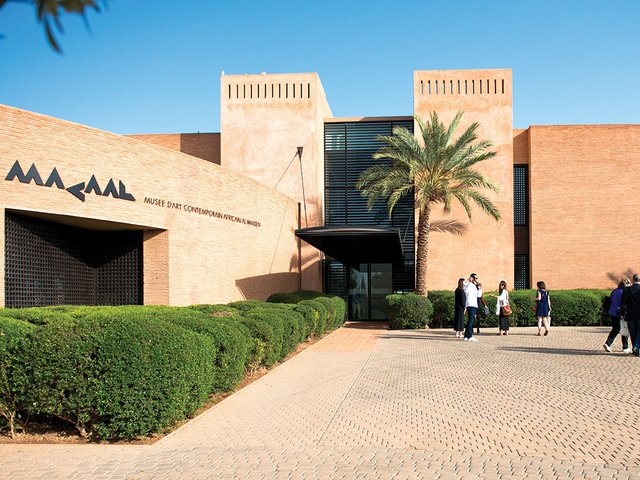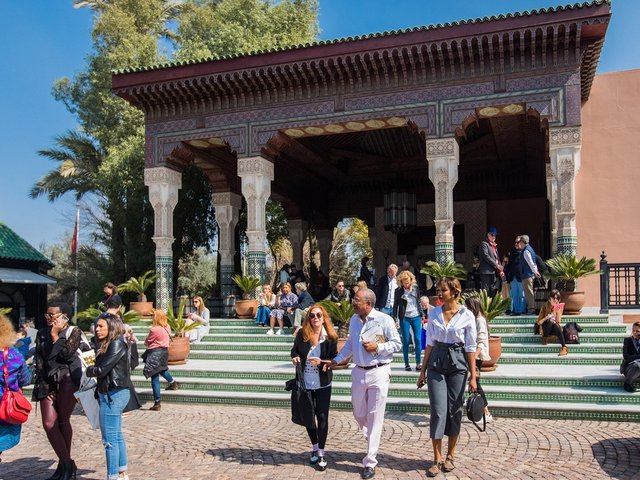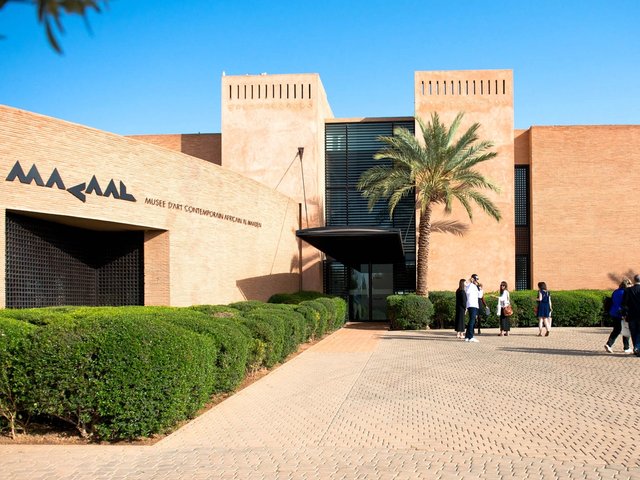The Museum of African Contemporary Art Al Maaden (MACAAL), inaugurated in 2018 as the first museum of contemporary art in Marrakech, is reopening on 2 February after a major refit and a structural evaluation in the wake of the 2023 earthquake.
Originally designed by the French architect Didier Lefort, the museum has been closed since the spring of 2023. The closure turned out to be fortuitous; months later, on the night of 8 September 2023, a powerful 6.8-magnitude earthquake struck just south of the city, the strongest to hit Morocco in over a century.
The quake primarily affected rural communities, leaving nearly 3,000 dead and thousands more injured. It also dealt a significant blow to the cultural heritage of Marrakech, a Unesco World Heritage site often referred to as the “Red City” for its distinctive sandstone architecture. The city’s historic Medina, a labyrinth of alleyways, souks, kasbahs and centuries-old buildings, was particularly hard hit.
MACAAL’s contemporary construction helped it withstand the worst of the earthquake’s physical impact and much of the collection was held safely in storage when the quake struck. But some of the art that remained had to be removed for safety assessments, and the building has since undergone structural analysis by seismic engineers to determine its durability in the event of another earthquake.
“I’m pleased to report that our 15-year-old building sustained only minor fissures, reflecting its strong construction standards,” says Othman Lazraq, the private collector who founded the museum together with his father Alami. “As we were already undergoing redevelopments, we took the opportunity to implement minor reinforcements.”
For the redesign, the museum has worked with the scenographer Franck Houndégla to accommodate a new media library and a permanent space that allows it to display a broader collection of African art from the Lazraq family’s private collection, including works by Joël Andrianomearisoa, Hassan Hajjaj, Abdoulaye Konaté, Chéri Samba, Malick Sidibé, Mohamed Melehi, Farid Belkahia and Chaïbia Talal. It is also launching a new programme of site-specific sculpture commissions. The new permanent exhibition, called 7 Contours, 1 Collection, will feature more than 150 rotating works, from painting and sculpture to textiles, installations and multi-media. In themed galleries, it will explore topics such as decolonisation, globalisation and the environment.
With its geometric mosaics, use of local stone and terracotta and earth-toned façades, the museum draws on a blend of local and vernacular architectural traditions while also borrowing from contemporary minimalist aesthetics. Materials historically used in Marrakech help to regulate the temperature, while central courtyards flanked with mashrabiya-style screens—a hallmark of Moroccan riads—reinterpret these traditional features into clean, open and flexible gallery spaces filled with natural light.
MACAAL’s grand public opening in 2018 coincided with the establishment of 1-54 Contemporary African Art Fair in Marrakech, the first art fair dedicated to contemporary African art. The fair is held annually in the grounds of La Mamounia, the luxury hotel popularised by the Netflix satire of “fake heiress” Anna Delvey. As well as Delvey’s unpaid-for stay (she racked up a bill of $62,000, which was charged to a now former friend’s Vanity Fair corporate card), the hotel has hosted Jacques Majorelle, Yves Saint Laurent and, more recently, the Kardashians and Cristiano Ronaldo.
Serving the community
It is difficult to shake the feeling, then, that 1-54 is designed with the international and monied elite in mind, while the hotel, situated on the edge of the Medina, is carefully positioned for tourists who want to explore the souks and then retreat to luxury each evening. But MACAAL, built on the banks of the Oued Issil, the city’s only river, on the other side of town, was founded with another aspiration in mind. “Before MACAAL, we didn’t have any museum in Morocco dedicated to contemporary art,” says Meriem Berrada, the museum’s artistic director. “Marrakech has vastly changed in this regard, and I think MACAAL has played a part in this.”
How can you get people to come and feel at home? How can we develop relevant programming for people from all over the country?Meriem Berrada, MACAAL artistic director
From MACAAL’s conception, the curatorial team was engaged in the question of how to welcome a society unused to contemporary art. “It’s a fancy building and this naturally creates a psychological barrier,” Berrada says. “How can you get people to come and feel at home? How can we develop relevant programming for people from all over the country?” The museum introduced interactive workshops and guided tours for schoolchildren and families from rural or underserved communities, as well as a programme of outreach initiatives. For the museum’s early exhibitions, Berrada ensured that there was a focus on traditional craftsmanship.
“The truth is, not everyone in Morocco is literate,” she says. “We had to think carefully about this, so we offered a huge engagement with craftsmanship. We would arrange shuttles for communities from remote villages to visit and they would find what they also have at home. When you enter a place that looks strange to you, where you might not think you can feel comfortable, seeing something familiar makes it meaningful.”
At lunchtime each Friday, the gardeners, security staff, cleaners and backroom staff down tools to meet in the museum’s lush grounds. There, the kitchens serve up a traditional Moroccan couscous, slow cooked with root vegetables, lamb, saffron, almonds, raisins and ras el hanout. Friday afternoon marks the start of the weekend in Morocco, and it is a chance for every component of the museum, from the bottom to the top, to mix before returning to their families.
“It’s a no-label lunch,” Lazraq says. “There are artists, collectors, curators there, but there’s everyone else that makes the museum work, too. We say: bring your family, bring your kids. And we all eat together. It’s very simple but it results in the most incredible conversations.”
Some of the art world’s better known characters have broken bread with the city’s workers and their families. One high-profile American museum director “was shocked that we were bringing the taxi men of Marrakech to the museum, gathering them around couscous”, Lazraq says. “But this is traditional in Morocco. If someone knocks at your house on a Friday, you give them couscous.”
• 1-54 Contemporary African Art Fair opens on 30 January


